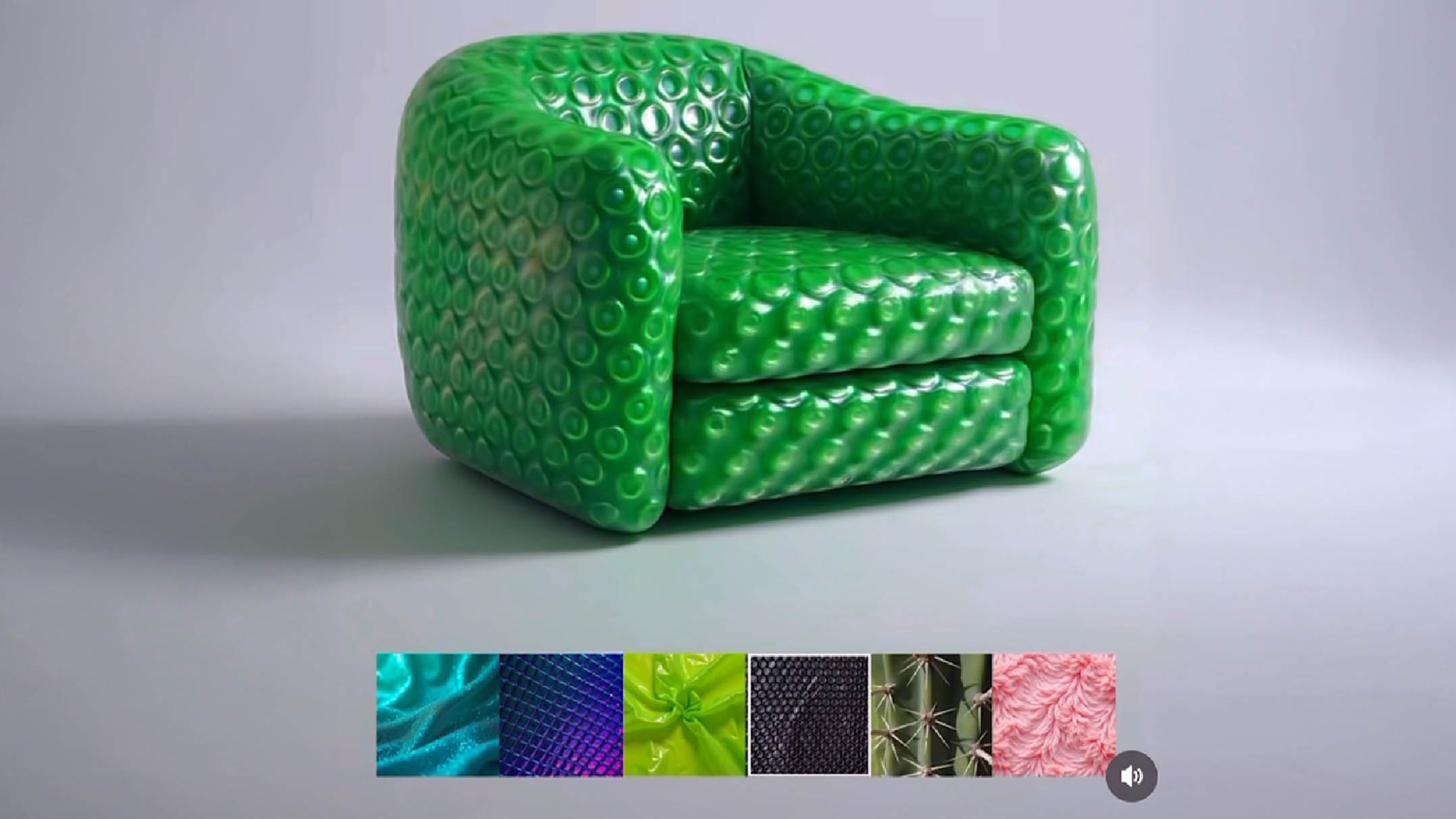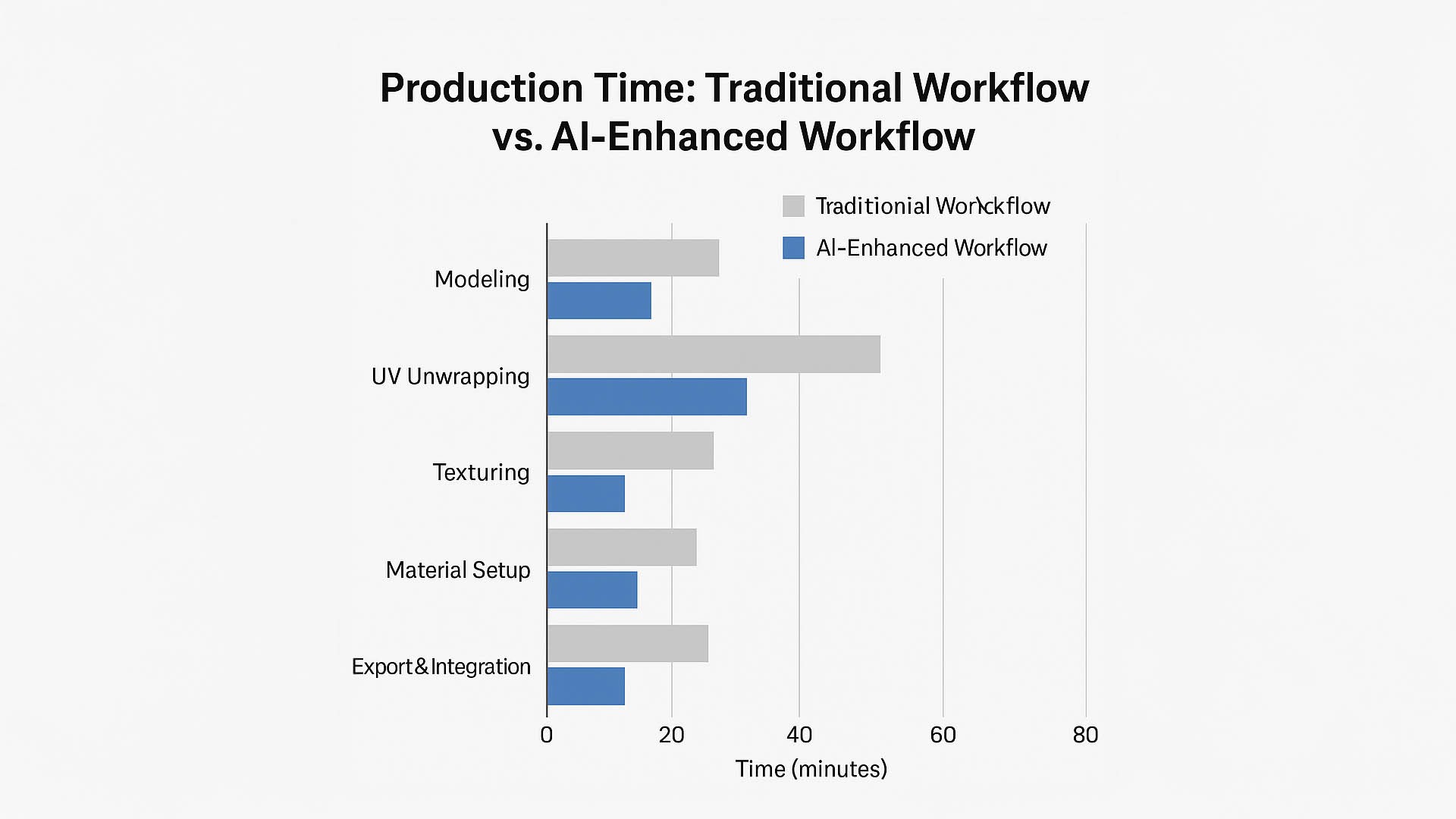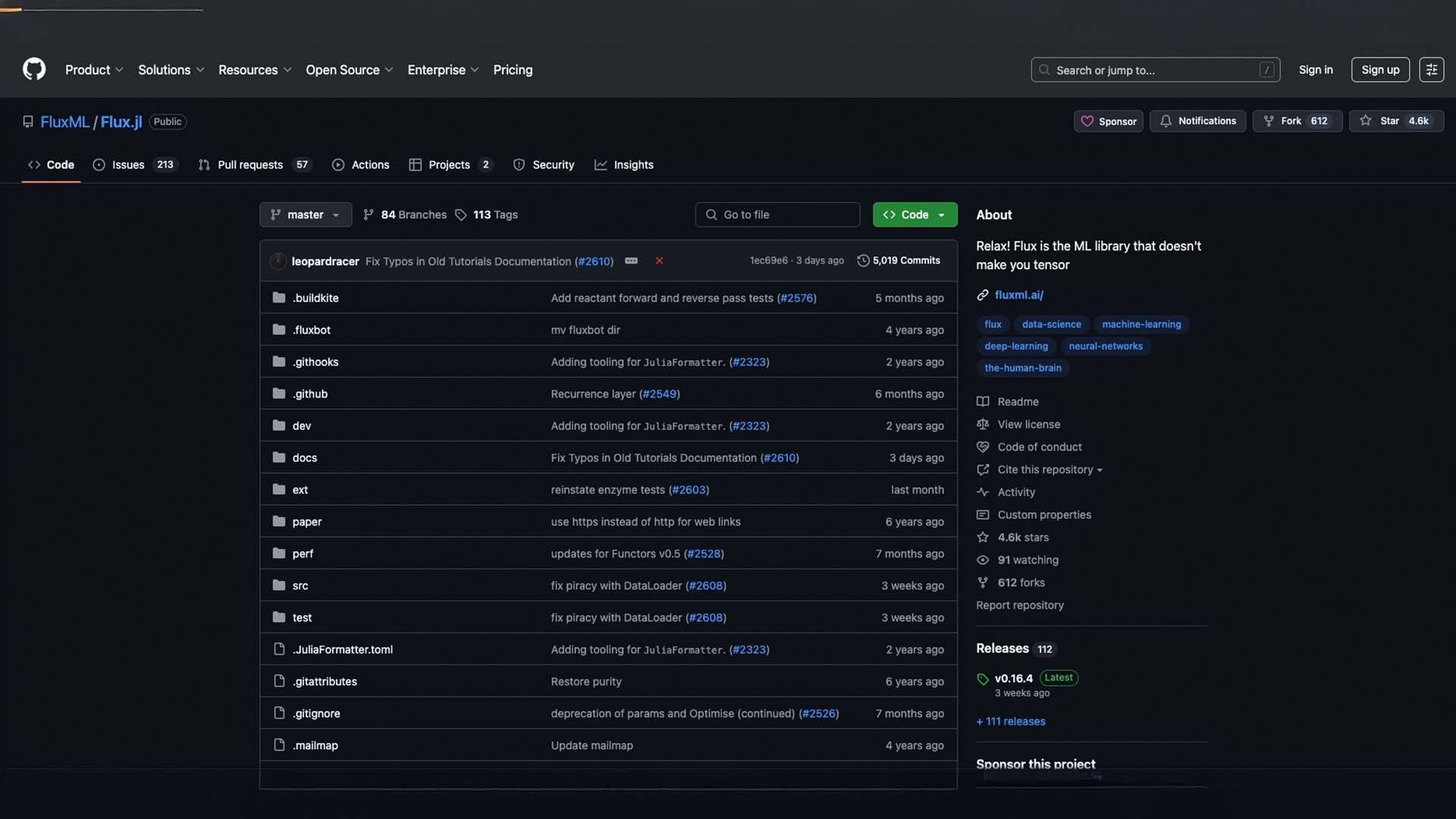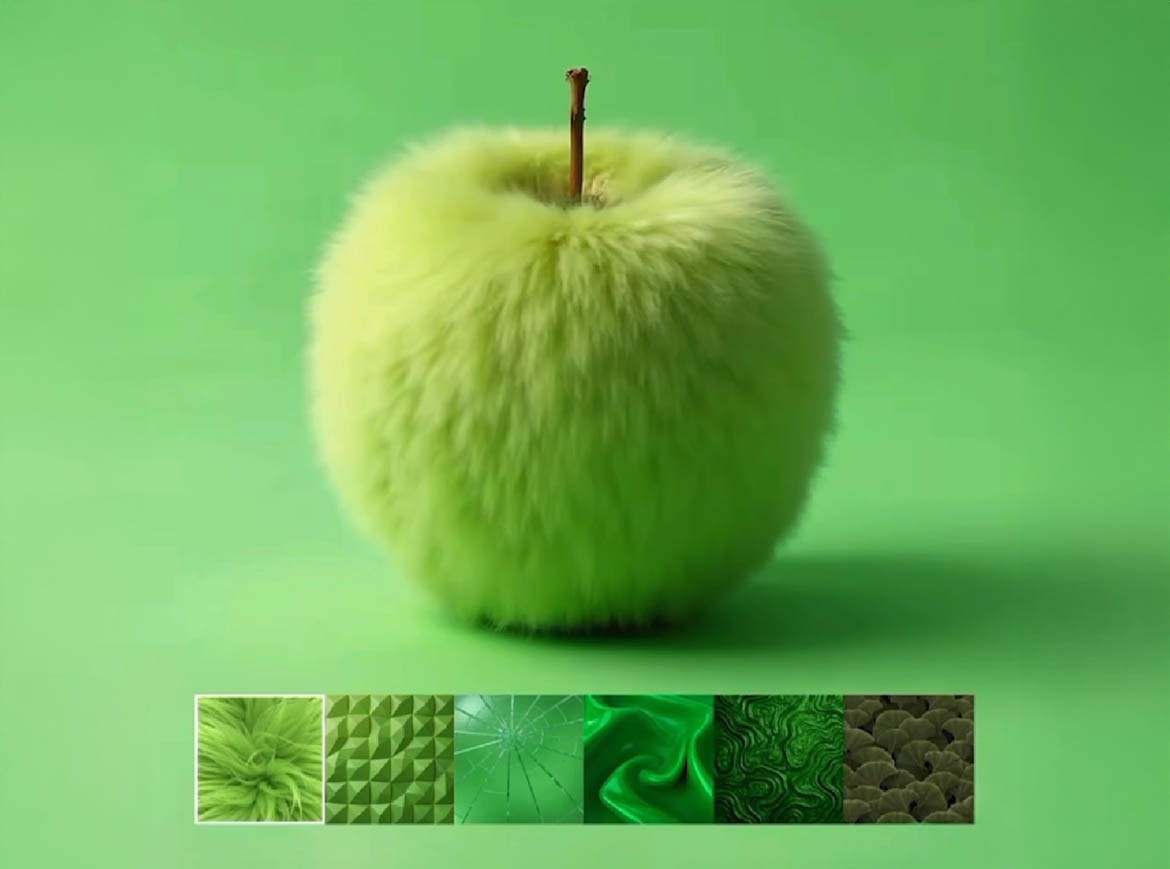AI Texture Mapping
Visualization: Generated visual by Freepik, contextualized by Flux I | Topic: Artificial Intelligence
How AI Is Transforming Our Perception of Materials
Whether it’s an armchair, a surface, or a digital prototype – what if textures were no longer selected manually but generated instantly at the push of a button? AI-driven systems like TextureGPT make this a reality. They analyze image and material data, combine sensory input streams, and suggest realistic and innovative material options in real time.
- Textures at the Push of a Button: Text prompts become material suggestions – automated and customizable.
- Sensor-Based Feedback: Combining text, haptic data, and visual simulation.
- For 3D, XR, Industry & Fashion: Versatile applications – from virtual product shows to smart factories.

Generated Material on Digital Product
Visualization: Generated visual by Freepik, contextualized by Flux I | Topic: Artificial Intelligence
Material creation is increasingly becoming a data-driven, adaptive process. Machines learn how an object should feel, shine, or wrinkle – and simulate it instantly.
Next Level for 3D Artists, Design & Engineering
Instead of time-consuming texture maps, creators, engineers, and motion designers can generate visual variants in seconds – tailored to lighting, form, material, and context of use. This reduces development time, increases design diversity, and enables simulations that offer real advantages in production and marketing.
- Faster Prototype Testing: Immediate feedback on material aesthetics in digital space.
- Expanding Design Systems: More diverse libraries and realistic material effects.
- Also for XR & Metaverse: Immersive products, fashion, and architecture with authentic material presence.

Smarter Materials via AI
Visualization: Generated visual by Freepik, contextualized by Flux I | Topic: Artificial Intelligence
From creative industries to industrial design, gaming, and simulation: AI-powered texture engines are radically transforming workflows. They also enable new interfaces between language, image, and material.
Infographic: How TextureGPT Cuts Design Time in Half
The diagram below illustrates how much faster AI-based texturing is compared to traditional methods – measured by design time and variety of outcomes.

Efficiency Comparison of Texturing Processes
Source: Visoric Research, Open Source TextureGPT Labs, 2025
Using generative texturing tools can accelerate design cycles by up to 60% – while increasing diversity at the same time.
Want to Try It Yourself? Machine Learning Models with Flux.jl
If you’re interested in experimenting with AI-generated texture creation, the official GitHub repository of **Flux.jl** offers a technically demanding yet promising foundation. Flux is a machine learning framework written in the Julia programming language, optimized for complex neural networks. While the specific project shown in our video is not publicly accessible, the architecture can be replicated or adapted using Flux.
- Open-source on GitHub – suitable for custom training pipelines
- High flexibility through Julia-based model architectures
- No public beta version of the featured pipeline available – as of June 2025

Image: Overview of the Flux framework for AI projects on GitHubSource: fluxml.ai
Direct access to the texture generation pipeline featured in the video is currently unavailable. However, developers experienced in Julia and machine learning can already start building their own solutions via the following repository:
https://github.com/FluxML/Flux.jl
As soon as public access to the specific texture pipeline becomes available, we will provide an update via the Visoric Newsroom.
Video: TextureGPT – When Words Become Materials
The video below demonstrates how prompt-based texture generation works in real time – from input to the final visual appearance.
by Flux I | Context: AI in Action
Video: © Visoric GmbH / Kontext.AI | Materials generated by speech – ready to use in 3D design.
Get in Touch with Our Expert Team
The Visoric team supports companies in developing, implementing, and optimizing intelligent AI-based 3D material workflows.
- Consulting & Analysis: How generative material systems can accelerate your pipeline
- Implementation: Integrating TextureGPT & more into your design processes
- Prototyping & Training: Building texture models, running simulations, and deploying in XR
Contact us now and reimagine your AI Material Experience!
Contact Persons:
Ulrich Buckenlei (Creative Director)
Mobile: +49 152 53532871
Email: ulrich.buckenlei@visoric.com
Nataliya Daniltseva (Project Manager)
Mobile: +49 176 72805705
Email: nataliya.daniltseva@visoric.com
Address:
VISORIC GmbH
Bayerstraße 13
D-80335 Munich


